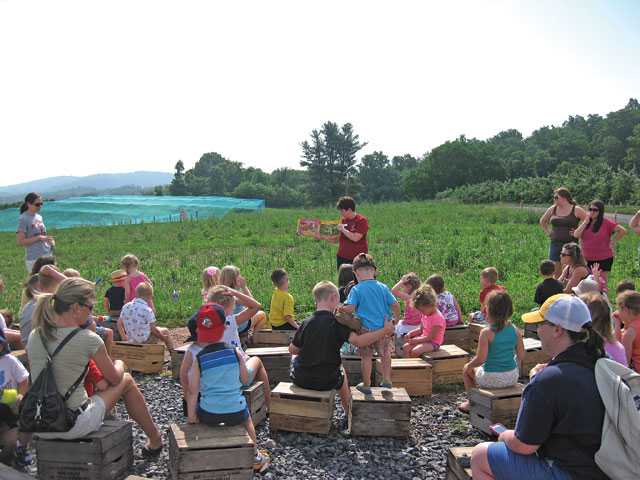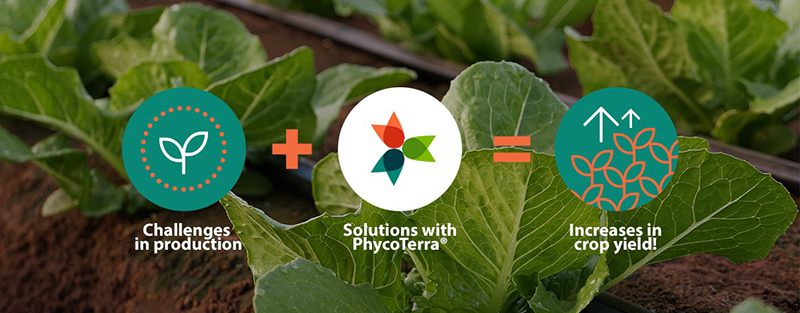4 Creative Ideas For Your Farm’s Direct Marketing Business

For many years, Garwood Orchards in La Porte, IN, has used roadside billboards as part of their marketing strategy. (Photo credit: Garwood Orchards)
Standing out in the world of direct marketing is one part ingenuity, one part marketing, and one part demographics. What works for one orchard or farm may not necessarily be a good fit for another. But for these farms and orchards, thinking outside of the proverbial box is a standard part of running a direct marketing business.
“Every opportunity we can create to give folks an added reason to come to the farm is a benefit. It’s an opportunity to teach, an opportunity to sell, and an opportunity to create and build relationships,” says Ellie Hollabaugh Vranich, retail market manager and assistant business manager of Hollabaugh Bros. Inc., in Biglerville, PA.
1. Having A Big Presence
Garwood Orchards in La Porte, IN, takes the concept of standing out to heart. For many years, the Garwood family has used roadside billboards as part of their marketing strategy. These billboards are displayed along the Indiana turnpike to attract tourists driving across the state.
“While seemingly expensive — in comparison to a single-run, print advertisement — they are a good value and effective. We put about 30% of our advertising budget towards billboard ads each year,” Carey Garwood, marketing manager, says.
The process of creating print-ready billboard designs is easy and it’s done in-house at the orchard she says. Garwood has featured billboards with a “Godfather” movie theme and eye-catching photos (pictured above).
“We try to come up with unique ideas or use photos of visitors to our farm, encouraging them to share their photos with us through Facebook or our website,” she says. “It does help to be able to do the design/creative work yourself.”

Young children enrolled in the “Read, Learn, Grow” summer program at Hollabaugh Bros. Inc., listen to a story focused on fruits or vegetables. Fruit or vegetable picking or a craft activity are also part of the programming. (Photo credit: Photo credit: Hollabaugh Bros. Inc.)
2. On-The-Farm Learning
Hollabaugh Bros., Inc., has been offering “Read, Learn, Grow” — a weekly summer program — for three years. Children ranging from 3 to 8 years old visit the farm for a story, vegetable or fruit picking, or a craft.
“It’s been an incredibly successful and rewarding way to teach children about agriculture,” says Hollabaugh Vranich. “Parents love it because it gets the kids out of the house and teaches their children about where their food comes from.
Kids love it because it is a ton of fun. We love it because we’re fulfilling our mission to educate about what we do while bringing new faces to the farm on a weekly basis all summer long.”
3. Pairing Up
Running is an increasingly popular hobby and form of exercise. So when Running Fit — a Michigan running organization — approached Jim Koan about hosting a 5K/10K run at his family’s Almar Orchards in Flusing, MI, he thought it was a great idea — in part because the organization was handling the details necessary to host this type of event such as portable toilets, entertainment, food, etc.
“They just wanted to use our facility,” Koan says. “This is an opportunity to get back into agritourism without me — the farmer — having to do too much organizing and managing.”
The Skrumpy Skedaddle — named for the Koan family’s JK Skrumpy hard cider — will be held Oct. 5, and the organizers expect anywhere from 2,000 to 4,000 runners to participate this year. The Skedaddle is part of the “Thirsty 3” trio of beverage-themed runs throughout the state. Koan will provide a JK Skrumpy sampling for all runners.
“Running is healthy, apples are healthy,” he says. “I believe it’s going to be really exciting for people. Normally they’re out running around the roads but to actually come to an apple orchard in the fall, where there’s apples and cider, and come down the rows and see all these apples on the trees it is going to be a real memorable experience for them.”
The Skrumpy Skedaddle is not the only run with a connection to hard cider. In fact, Koan recognizes the potential for these types of hard cider-themed runs as the beverage market takes off.
“There’s an opportunity here for a lot of growers in the state to do this same thing,” says Koan. “There’s tens of thousands of runners that could be out running around Michigan apple orchards.
4. Lots Of Competition
The Finger Lakes Region of New York is dotted with wineries and vineyards. So it’s an understatement to say that the Wiltberger family has to be mindful of their surroundings when trying to set their family’s business, Keuka Spring Vineyards, apart.
Along with boasting award-winning wines, the Wiltbergers see the customer experience as being vital to their business. Keuka Springs offers an education series that focuses on the winemaking process, the different wines sold, and wine and food pairings.
“That person coming in the door is special,” says owner Len Wiltberger.
The personal connection that visitors feel at Keuka Springs is directly related to the people behind the counter, say the Wiltbergers. The family seeks out employees that are good listeners, have a warmth and friendliness, and truly embody the spirit of the family-owned business.
“They remember the experience in the tasting room with the wine and the staff,” says Jeanne Wiltberger, marketing coordinator. “You have to be a good listener to be a good sales person. Every tasting is unique.”
Questions To Ask Before Adding An Event Or Activity
Garwood and Hollabaugh Vranich say their families take time in deciding what, where, and when to add an activity, considering not only the pros and cons but also:
- How much will it cost to implement it?
- How much income can we expect from it?
- Do we already have the materials needed, or do we have to build or buy something new?
- Do we have the manpower to undertake this new venture?
- Are we prepared?
- If we do it, will we do it as well as we do everything else and continue to exceed our customers’ expectations?










